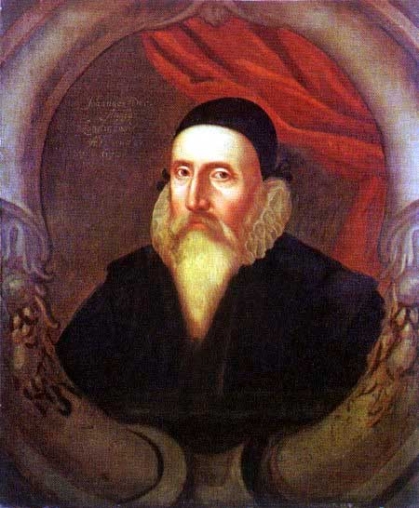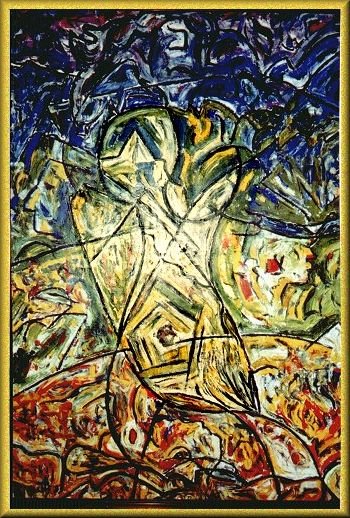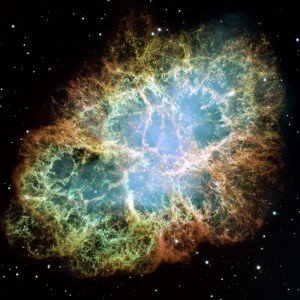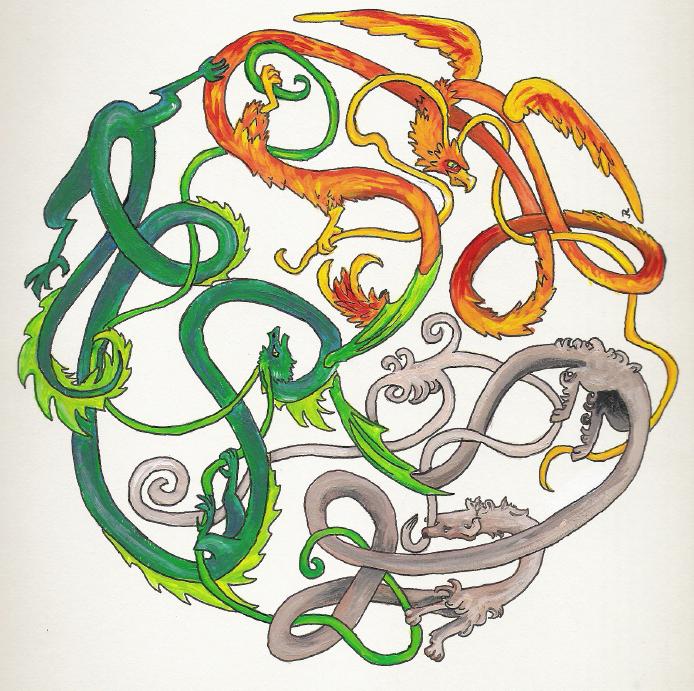We moderns have nothing whatsoever of our own; only by replenishing and cramming ourselves with the ages, customs, arts, philosophies, religions, discoveries of others do we become anything worthy of notice.
Friederich Nietzsche
Exit all legends, enter the laws of magick.
Genesis Breyer P-Orridge
“You got no love in your heart. When you got no dreaming, no story, you got nothing”, an Aborigine says to the hero in a movie called ‘Australia’ (the movie is crap, but I’m used to look for gold in shit). The aborigines have a very mysterious concept that they call dream time, this is the mythical & magical time, where the ancestors still live & sing and every thing has a ‘song’ attached to it: rocks, trees, bushes asf. – all have a ‘song’. And the initiated sorcerer of the Australian natives can communicate with these ‘things’ by singing their songs (a form of verbal magic, in Norse magic represented by Galdor). Here we are once again confronted with the holistic vision of a sacred landscape, where everything is interconnected & alive – a worldview that was also common to our European ancestors (or wherever your ancestors come from). This vision is contrary to the modern myths created by the visions of Descartes & ‘Newton’s sleep‘ (William Blake). Both of them had literally visions. Descartes’ thinking has been influenced, for example, by his dreams & Newton has been an occultist, who has received his vision of the mechanistic ‘clockwork universe’ from an ‘Angel’ of the Enochian system of magick ‘invented’ by Dr. John Dee. 
Their visions are the stories about the universe we are brought up with. (If you have really bad karma you have been brought up with Kristjan stories about the universe :-). They do not stem from dream time, but from the modern myth of linear time. (‘Our enemies are material. Our enemies are direction and fact. Our enemies are Because.’ GP-O)
Anyway, what really strikes me is the idea how much power a story has over our lives and that – since nobody owes the absolute truth, if such a mysterious thing exists at all – all religions, philosophies, myths, histories, fictions and movies are essentially stories, stories we tell ourselves or that are told to us. Of course, this is a postmodern attitude that I am extremely wary of as it includes the risk of fundamentalist relativism and an ‘epistemological hypochondria’ (Geertz), where ‘anything goes’ and thus real knowledge becomes impossible anymore. But everything has two faces and there are also great advantages, when one uses POMO thought in a critical & self-conscious fashion.
“Post-modern research … embodies a critique of the conventional logical positivist discourse derived from rationalist Enlightenment philosophy, which privileges the European, male, individual subject and the indisputable authority of scientific explanatory frameworks.” (Robert J. Wallis 2003: Shamans/Neo-Shamans: Ecstasies, Alternative Archaeologies and Contemporary Pagans, p. 2).
I think this critique is a necessary step, if one really wants to understand the local knowledge of a native people, like the Aboriginal tradition (or our Heathen tradition). This means, too, that to select carefully a few essential tenets of postmodern philosophy can bring about changes in attitudes, values, perceptions, and worldviews that help us to heal the wounds between ‘whites’ and the peoples we have hurt (see Henry’s article Culture, Genocide and Whingers). More generally speaking, such a ‘paradaigm shift’ on a grand scale can help us to heal the wounds between humanity and the Earth Spirit (Anima Mundi). 
Further, the positive effects of postmodernism can be, if used wisely, that we deny to follow ‘universal rules’ (of life, art, philosophy, or anything else). And those who have the will and determination can choose pathways to individual fulfilment & self-empowerment based on the story (‘paradigm’) chosen or created by themselves, instead of following the universal appeal or supposed authority of a story they were told to believe (be it religious metaphysics or scientific materialism, or whatever your favourite mental prison is). If something feels internally authentic & right, it’s the way to go. For us Chaos Heathens / Pagans this attitude makes it possible to liberate us to return to the trú traditions of our ancestors in new, exciting, and creative ways, in ways that adapt and apply the ancient wisdom to the circumstances and the Need – in the sense of :ᚾ: – of our times.
However, to me storytelling is a form of magick and a form of knowledge. Imagine a tribe 10,000 years ago in a dark forest at night. You can hear the wolves howl, and you hear the strange sounds of other dangerous animals, above you the stars and a full moon. Only a little bonfire enlightens the night and you sit there in a circle with your comrades, the shaman of your tribe – a miraculous man with special powers, who is treated with awe by all men of the tribe – sits with you there and tells wyrd stories of cosmic, uncontrollable and daunting forces, of Fire and Ice generating the events that created the universe. He tells you about Ymir, the bipolar Giant, dismembered by the mighty Gods, Odhinn (Master of Ecstasy), Vili (Sacred Will) & Vé (Hollowed Space), who made order (Futhark) out of the totality of existence (Ginnung) and shaped the first man & woman, Askr and Embla, out of trees (!), giving them the triple Gift (Gebo) of human shape (Lík), life-breath (Önd = Prana, Chi, Libido) and (divine) consciousness (Ódhr). His stories tell you about the adventurous journeys and brave deeds of heroes that are your direct ancestors, whom maybe your dead great-grandfather met personally, when he was a child. These journeys of those heroes turn into ordeals & initiations, where they gain insights into the mysteries and cycles of birth, life, death & rebirth. These stories are strange allegories that illumine your understanding of the world surrounding you. They give you heroic models of behaviour that help you to live in an honourable way. Our shaman from 10,000 years ago is a storyteller. He creates a sense of self, of who and where you are. He gives codes of meaning & an intelligence to your life that makes you aware of the interconnectedness that the Web (Wyrd) woven by the Three Norns originates. Magick is possible here – you are not alone, disconnected and alienated from the world! 
But 10,000 years later these stories of old are not told to us anymore. They became myths in a negative sense, fantasies of stupid, uneducated, brutish barbarians. The modern stories describe such states of consciousness (as mentioned above) as being ‘primitive’, ‘infantile’ and ‘wishful thinking’. They are something that must be ‘overcome’ by logical & scientific thinking. The French ethnologist Lévy-Bruhl interprets such a healing and wholesome state of unitary consciousness in a negative sense as participation mystique and the Austrian psychoanalyst Freud called this ‘magical thinking’ (based on his idea of primary narcissism). ‘Magical thinking’ is the belief that a person can impact reality by wishing or willpower. Such a belief demonstrates a belief in the self as powerful and able to change external realities. To put it shortly, magical thinking is in many ways what I strive for! For many years now, I try to decondition myself from this vision of ‘flatland’ logic by psychedelic drugs, meditation and magick (more or less successfully until now :-). Though in the long run POMO thinking is not at all ‘magic-friendly’ and, though the whole POMO current has created in many areas a body of knowledge of rather dubious value, I still believe that on a philosophical level some POMO ideas are useful to regain ‘magical thinking’ in a positive, ‘enlightened’ way, namely by creating new stories. Don’t get me wrong, science is invaluable! But the scientific story – if not balanced by wisdom, if not shown where its authority ends, and if not shown where it failed (!) – has not much (interesting) to say about the most important questions of life: What is the purpose of life? What happens after death? What is wisdom? Or, if I may quote again my ‘Aboriginal friend’ (from Hollywood:-), his answer to science would be the same as to the white man: “You got no love in your heart. When you got no dreaming, no story, you got nothing”. This is not completely true, of course. Science has a story: it dreams of ‘eternal progress’ and a condition where all disease, probably even death, is cured. For those who haven’t been so optimistic, it has created nihilism. And what is the story of nihilism? It goes: “The story is pointless. It all makes no sense. End of story.” But we Need a story. A brighter story, a greater story, a hopeful story!
But what can a story do on an individual level? Isn’t a story just a story? Well, yes and no. For example, what is the ego? From a meditative point of view, my ego is just the stories I tell myself about myself. But some stories are charged with a very high emotive energy. So, before my ego would give up its ‘core’ stories, it would probably run mad & defend them from extinction like a religious fundamentalist would protect his belief in God, just because the ego consists of these stories. Probably that’s why it’s so hard to ‘Cross the Abyss’, as Crowley has put it. Probably that’s why most humans fear death! Probably that’s why it’s hard to change at all! Because, you know, ‘that’s just the way I am!’, so I won’t give up this-or-that habit or such-and-such a way of thinking or repetitive emotional pattern, even if it’s bad for ‘me’. Because ‘that’s me’! You get the picture… The ego will all-ways convince you with its stories, why you shouldn’t change, why meditating is boring, or why you have the right to behave angry, feel depressed or be xenophobic. So, in a fundamental way, it’s of great importance what story dominates you, what story you tell yourself about yourself. This, probably, is the reason, why meditative systems of the East have only little use for ‘developing a strong personality’ etc. and focus very much on developing ‘egolessness’, developing equanimity towards life, pain & death and fostering devotion towards the God/dess or the guru, who represents the God/dess and, ideally, works as a ‘mirror’ for the apprentice. Our Northern Tradition fosters instead the development of a strong Hamingja (cp. Sweyn’s True Helm) and of courage towards life, pain and death (cp. Dave Lee’s Bright from the Well: Northern Tales in the Modern World).
On a more profane level just consider what psychotherapy basically does to people. It just gives them a story, a meta-narrative, that makes sense out of all the shit that went wrong and by explaining why this shit has led the individual to feel ‘so-and-so’ about himself. By giving sense to that which seems senseless, by explaining the pain and giving it a meaning, and by telling the person that s/he is not defined by its past and that s/he can now choose to do better. Basically, it creates a better story and thus a better ‘self’ – the stories, of which the ego consits, are changed! (‘Change all memory. And change your ways to perceive.’ TOPY proverb) In a way, the therapist is a modern echo of the storyteller, as is, of course, the priest. But finally that’s not enough, because today, if you are a genuine member of the holiest of all holy orders, the COT (= Club Of Truth-seekers :-), the truth of someone else won’t suffice. The shamanic storyteller from 10,000 years ago is dead and gone. The only one who can ‘replace’ him today is not a politician, priest, psychotherapist or some self-proclaimed guru, but it is you. 
Remember You Are Made Of Star Dust
So creating your own story is a good starting point. The chaos magician Andrieh Vitimus suggests:
“The imagination is more powerful than merely the facts. An idea backed by emotional responses can be seductive enough to enslave many to its cause, whether the idea is a spirit, a piece of art, a cause, or a concept. The majority of people seem content to give away their imagination and creative power. Often, this manifests in letting other forces (advertising, religion, ideas, spirits, whatever) decide what they should do and what they can have and be. This is the power of imagination. It can free us or be our worst prison.” (Andrieh Vitimus 2009: Hands-On Chaos Magic , p. 365, my accentuation)
In days of yore Imagination was a natural part of daily life and regarded as valid as any other human faculty. Walliam Blake, whose Poetic Genius has created a unique poetry (see ‘The Proverbs of Hell’), embraced Imagination as ‘the Body of God’. Today our Imagination, our visualising asf., is ‘stolen’ by the story-sellers, who created the ‘Body of (Pavlov’s) Dog‘. Advertising is a good example. It sells ‘imagination’. So you buy the ‘myth’ surrounding the package, not the content itself. You don’t buy a perfume, but the ‘imagination’ that it makes you more erotic, attractive, seductive asf. Today we have no genuine storyteller except, probably, the artist. For example, artists who sing about the way they experience truth, like this one: “Waking sleep, cocooned within a veil of fog, Sight no further than my hand, Tearing at this web spun through reality … Through the sacred dance I Awaken, Through faith in myself and my rhythm, Conscious for the first time…” (Ironwood – here’s a fantastic German review). But today such artists are rare. Because in these modern days even the artist has become a whore of capitalism and thus he turned from a genuine storyteller to a storyseller – a faker, a peacock, a good-for-nothing. Mehr Schein als Sein (‘More Appearance than Being’). And stories they sell, packaged in a ‘consumer-friendly’ form, devoid of meaning and any real depth. A true storyteller, shaman & madman, Jhonn Balance (now dead dead dead – may he be blessed by all horned animals!), has warned our culture by proclaiming that Constant Shallowness Leads To Evil! The German artist and shaman (of sorts), Joseph Beuys, has said once: Every human is an artist. I would like to add: …and a storyteller. At least s/he should be. POMO theory started out when it proclaimed that there is no ‘grand narrative’ anymore (that the ‘scientific myth’ of modernity of eternal progress & secularization has kind of come to an end – that’s why post-modern). So, after Nietztsche proclaimed that ‘God is dead’, now the ‘grand narrative’ is dead, too. But I believe that we, as individuals and as a folk, need a narrative again, a story. And, in this globalized world, we need also a story for the earth community – a story that makes us aware of the interconnectedness of everything on this green-blue and fragile planet. Because when I poison the air over here in Europe, your air will be finally poised over there in Australia, too. So what could this story be about? Well, I’m not wise enough to answer this question, but we can silence our minds and listen to what the voice of our hearts has to say (what our ancestors called ‘High Rede’). And surely we can look with confidence to the wisdom of our ancestors and apply it. If the climate catastrophe shall be anticipated in time, science must be part of the solution, I believe. As the Permaculture slogan goes: ‘The problem is the solution.’ Mid-gard – Middle-Earth must be guarded, and it can only be guarded by us humans.


BRAVO!
“Imagination is more important than knowledge” – Einstein.
You might not be aware of a style of therapy called narrative therapy (an Australian invention I am proud to say), in which the therapist is not seen as an ‘expert’ who orders the client about but rather assists, through curiosity and open-mindedness, the client to elucidate both the ‘problem’ story they are living out and a new, preferred narrative.
The idea goes that problems get entrenched by ‘thin’ description – that is, when we settle into demoralising and self-perpetuating notions like “I’m just worthless” or “all women are stupid”. In other words we lose perspective and lose sight of the full picture.
You tend to see and experience more of what you expect and are looking out for. In mainstream psychology this is called the “confirmation bias” – the more evidence people gather the more stuck in their point of view they tend to get.
With simple compassion and curiousity the therapist and client gradually discover the ways that other stories are already active in the client’s life (either literally, imaginally, from the past, in the future, and many other permutations) and can begin to situate _these_ as the heart of the client’s life with richer, ‘thickened’ descriptions and understandings of the client’s experiences, abilities, desires and so forth.
The old ‘thin’ story begins to wither in the face of the expanding living reality which opens the door to a more positive experience.
This way of working tends to generate a whole new psychological theory for every client. I’ve been a client of this type of therapy and also employed it myself and it produces transformations and healings that on occasion have been so powerful that I would not have believed it if I had not been the counsellor or client there in that moment…
Incidentally… narrative therapy emerged as a therapeutic response to postmodernism!
H
Wow, that sounds fantastic! I must go deeper into this. Is there a book, online resource, or something?
I am reading Sweyn’s excellent book “True Helm” now and am pleased to see the exploration of a wisdom path that is grounded in the ancient European tradition which serves as an “other” to the globalising modernity of the West. (I believe that with the deeper development of Asatru, European spiritual practitioners can progressively gain more respect from native spiritual traditions outside Europe.) Being involved in research on comparative religion, I also note with great interest that there is a profound level of resonance with Eastern philosophy in “True Helm”. The meeting point, in my view, is the very fascinating notion of hamingja, which in one of its meanings corresponds to daimon in ancient Greece, i.e. guardian spirit. I think again of the Thelemic notion of congressum cum daemonae as the higher (or fearlessly abyssal) state of existence. The Vikings, however, associated hamingja with good luck – Socrates did, too, in relation to his daimon – but Crowley’s life, in contrast, was weighed down with misfortunes. I have no explanation for that.
Hi Volksfreund,
your comments are so EXCELLENT that I wonder that you haven’t still written something, an article or so, for Elhaz Ablaze (in the Guest Journal or wherever). I already wanted to say that based on the comment you have given on Heimlich’s last article ‘Teufel Und Baum’. Please please please elaborate these thoughts for us – about Jacob Böhme, the Abyss, the Daimon etc.
As to the comparison with Northern spiritual concepts & Crowley’s stuff: I also see similarities, f.e. between the ‘Holy Guardian Angel’ & the Fetch etc. I approached Norse Magic very much from a ‘Western Magic(k)’ perspective, but this has its drawbacks. I really recommend to anyone coming from a different ‘tradition’ to ‘forget’ about all the stuff they have learned in a different system (though I love Comparative Studies, too, and think they CAN bring more clarity). You can see the drawback very easily, when an occultist approaches the Runes with concepts from ‘Western Magic’. They confuse more than they clarify.
As to Crowley: If he was weighed down with misfortunes is disputable. I know exactly what you mean, but just consider his influence on occultism & modern magical currents, including Chaos Magic, LaVeyian Satanism & Setianism. In many ways Crowley was very successful. But I tell you my take on Crowley’s failure:
First of all, he was a very neurotic & immature person – psychologically & spiritually speaking. He never integrated the pain of his childhood. I even think, he never really CONFRONTED the source of his pain caused by his parents, who were religious fanatics. To stay in the metaphor of storytelling: he changed his painful ‘childhood’ story by creating an anti-story, he being the Antichrist etc. (a bit of a yawn!). And, though he has climbed a few mountains (here: in a spiritual sense), he wasn’t cabable of integrating this into his daily life (which is, probably, the hardest task of all, but also the ESSENCE of any true path). So my explanation for his misfortunes is that he never conquered ‘the devil’ (in the sense like Heimlich used the word in ‘Baum Und Teufel’) & his ego, in the long run. This is even reflected in his wit & his humour: he gave himself the number ‘666’. Six in the QBL is the Sephiroth Tiphareth, the Spiritual Sun – the ‘Higher Self’. The number ‘666’ is the shadow (‘qliphotic’) quality of the Spiritual Sun: the egotistic aspect, the ‘false self’, the ‘dwarf’ pretentig to be a ‘god’. This qabalistic insight has been once demonstrated to me from a good friend of mine, who is an initiate of the Golden Dawn. So, it seems to me, Crowley knew about his weak points & played around with this. Finally he failed. The devil promised him sweeties, but the devil lied!
PS: Sweyn’s book, True Helm, is an illuminating Master Work of a true Rune Master. This book was actually the first book that got me into the Northern Tradition on a practical level and opened a whole new universe in front of me. I study (and try to apply) its contents to this day.
Here is a great site on narrative therapy… ought to keep you reading for hours…
http://www.dulwichcentre.com.au/index.htm
Danke sehr, Matt, yes, Elhaz Ablaze is a very stimulating blog that keeps me thinking about many magical things and I will be pleased to write an essay for you guys one day. I am at the moment very involved in the study of Old Norse and Icelandic sagas with the view to grounding myself better in the northern tradition. Being Australian spiritual hybridity comes natural to me, but I don’t mix traditions in my own practice; however, at the same time I feel that I am intellectually responsible as an academic to point out resonant similarities between traditions and currents in the “seinsgechichtlich” (“being-historical”) manner that Heidegger talked about a lot after his “Kehre” (“turn”) from “Being and Time”. Let us all keep writing and learning!
I agree with what you said about Crowley: hermeneutically, his “Wirkungsgeschichte” (“effective history”) is deep and profound. Personally I am very moved by his daring magical experiments every time I read his writings. I have worked with Goetic forces before and they are extremely strong and difficult to control. I became seriously ill with a potentially fatal microorganism and it took me nearly a year to recover – the Norse gods really helped me with that, hence my pledge to study the Old Norse culture.
Volksfreund: The study of Old Norse and Icelandic sagas is of great importance & something I still have to do. And just btw, I also find it important, and even illuminating, to point out the resonant similarities between traditions and currents. I liked a lot what you said about the meeting of Eastern & Northern thought, especially in the context of Hamigja, as I couldn’t see any such a connection before. That’s why an elaboration of all this would be fascinating. Thank you
for your comments, Volksfreund!
Heimlich: Thank you very much for the link!
Addendum to 666: My friend, Reiner, corrected me in my representation of the number 666, so I will – just for the sake of ‘numerological correctness’ – add the information here.
666 is the number of Sorath (SORTh). Sorath is the planetary Spirit of the SUN. Every planet has an ‘Intelligence’ (in the case of the Sun it’s Nakhiel/NKIAL- numerological value 111) and a Spirit that is associated with it.
The Spirit is NOT qliphothiic, but is regarded as ‘evil’ and as a shadow aspect anyhow, since it is grosser und more earth-bound (thence they are closer positioned to the Qliphoth). The Qliphoth / Qlippoth are the ‘shadows’ of the Sephiroth – the Divine Emanations of God. They allegorize ‘peels’, ‘shells’, ‘matter’ or the primeval ‘husks’ of impurity and refer to the representation of evil forces in the mystical teachings of the Kabbalah / Qabalah / QBL. Ok., now you are in the know. Thanks, Reiner!